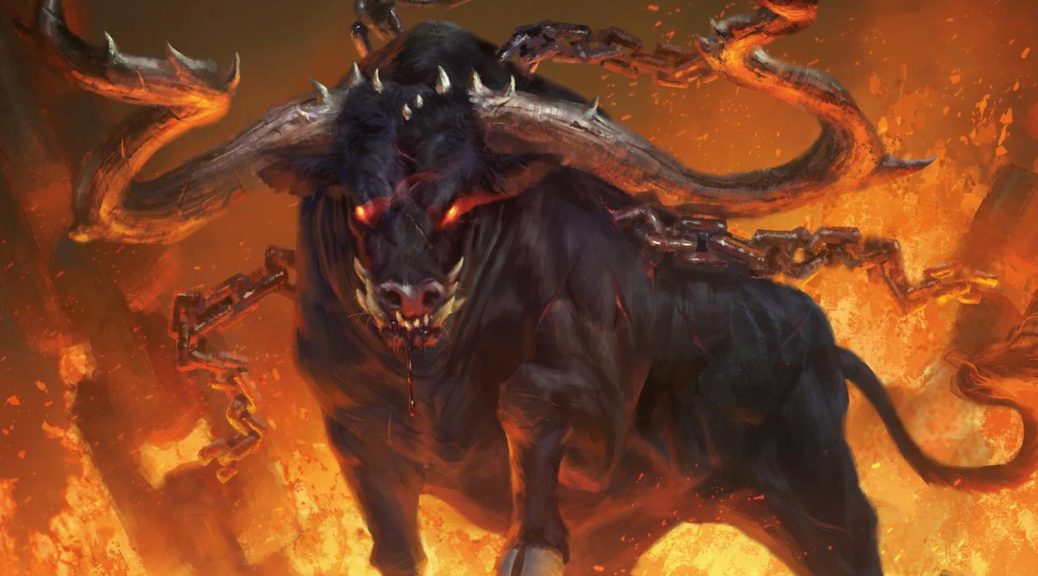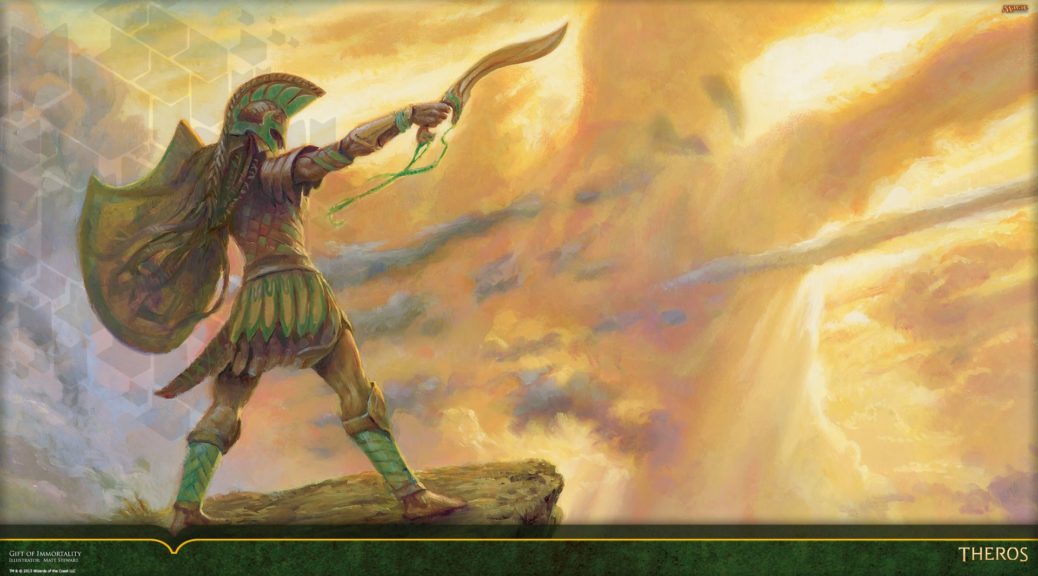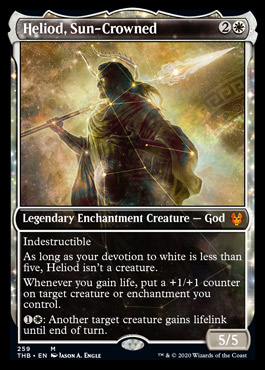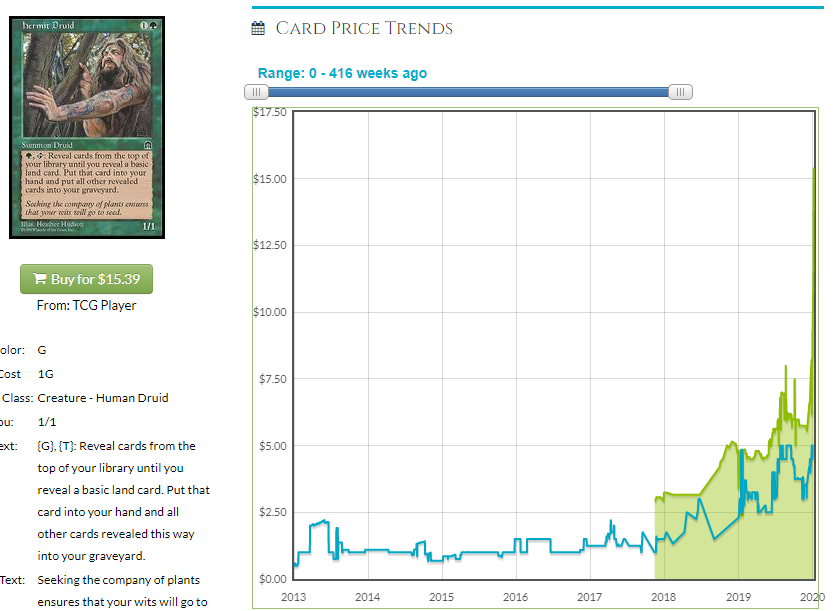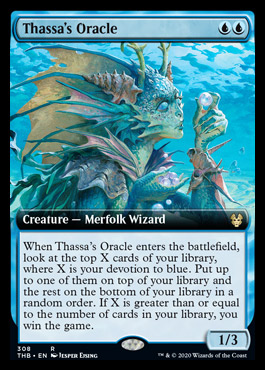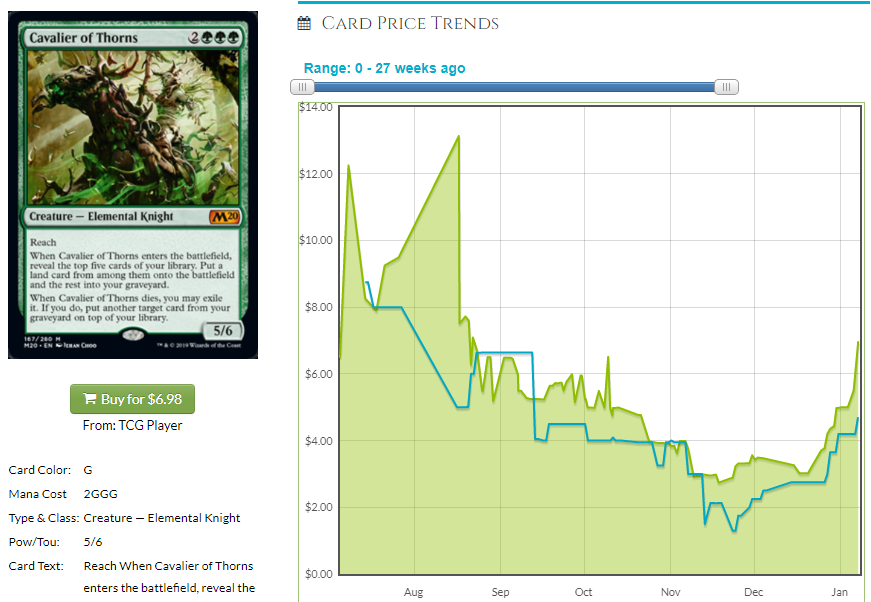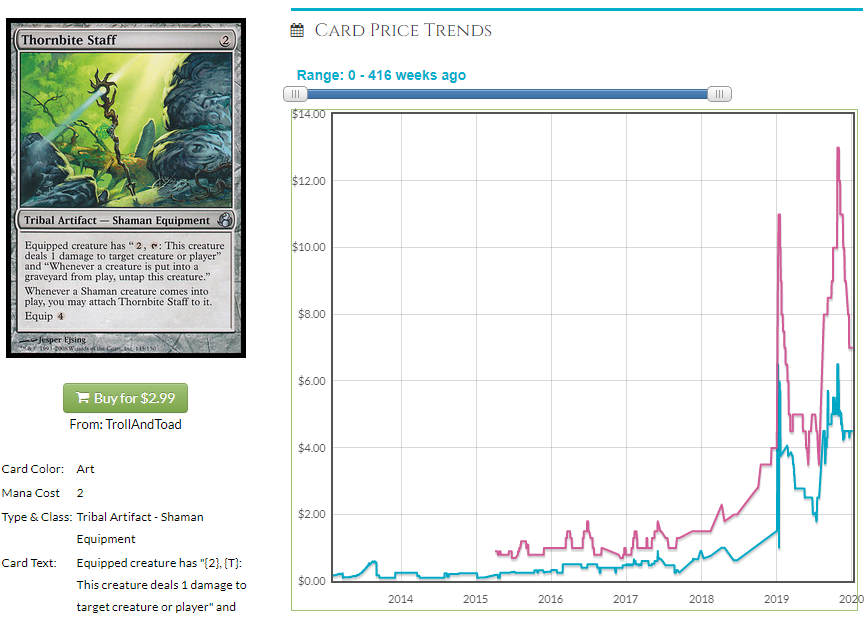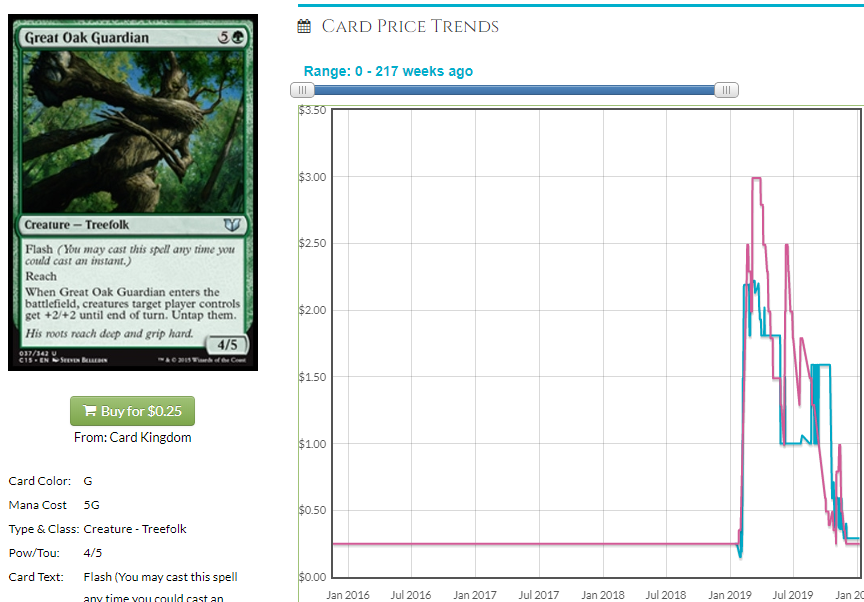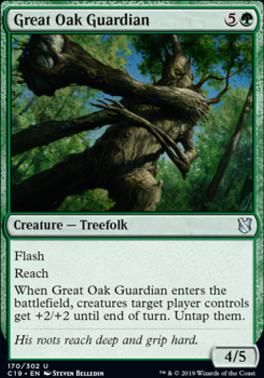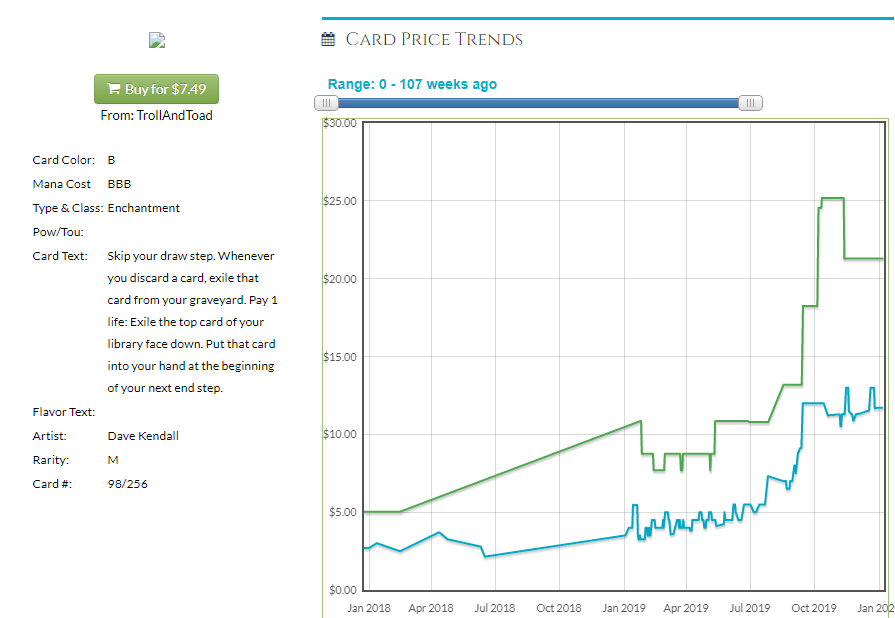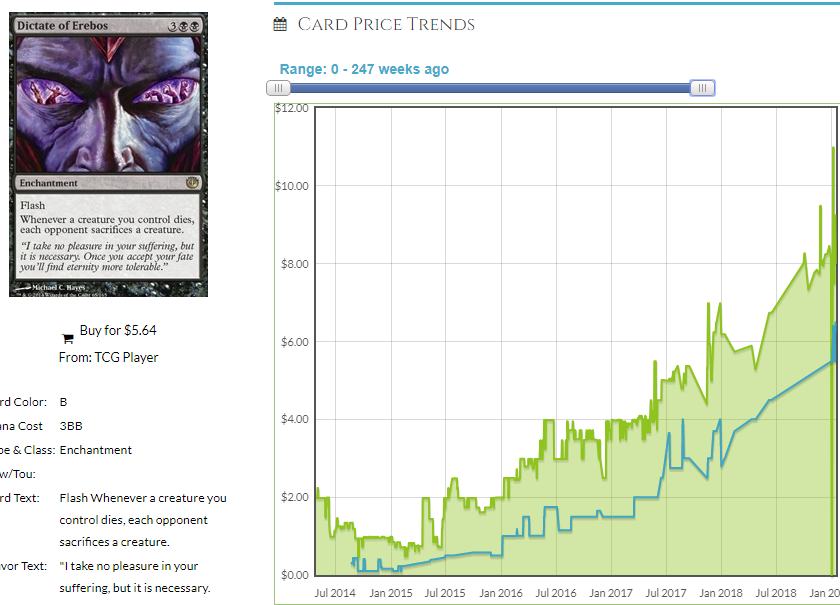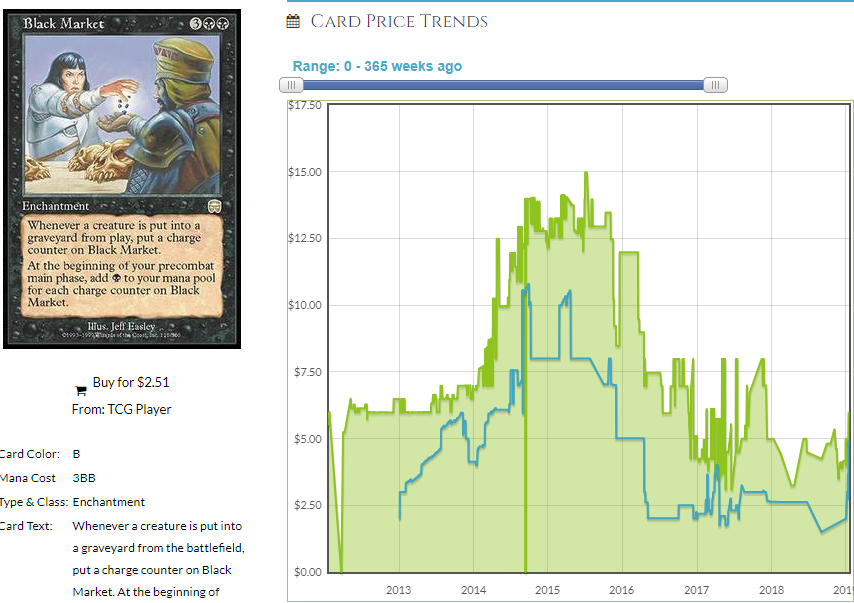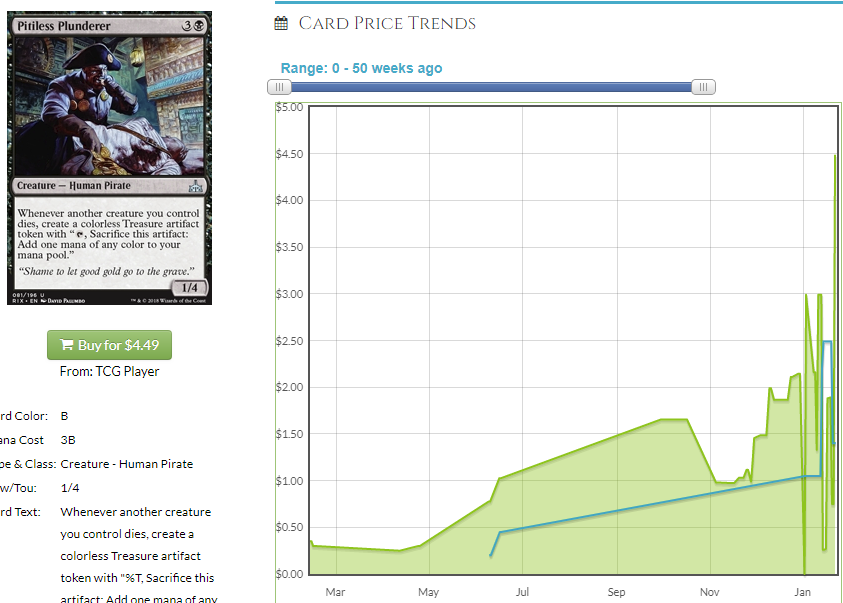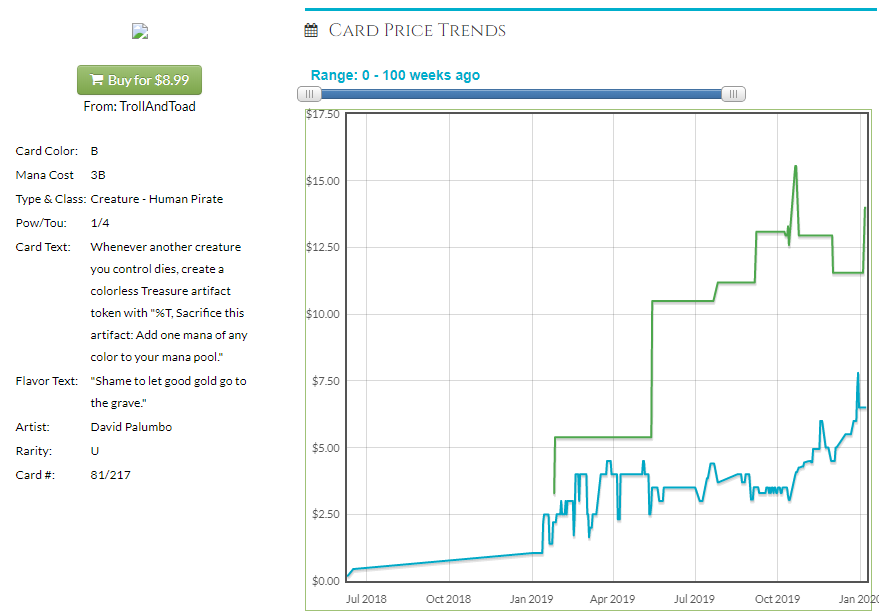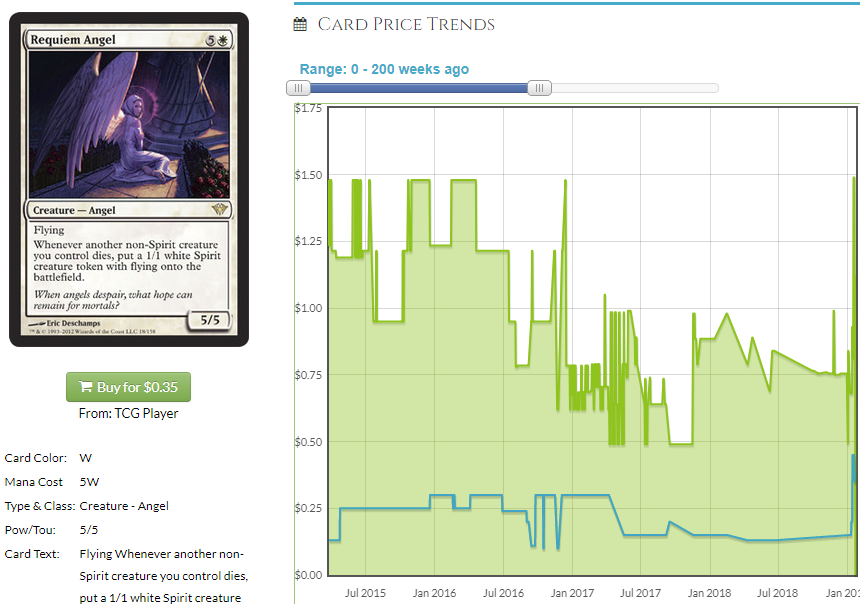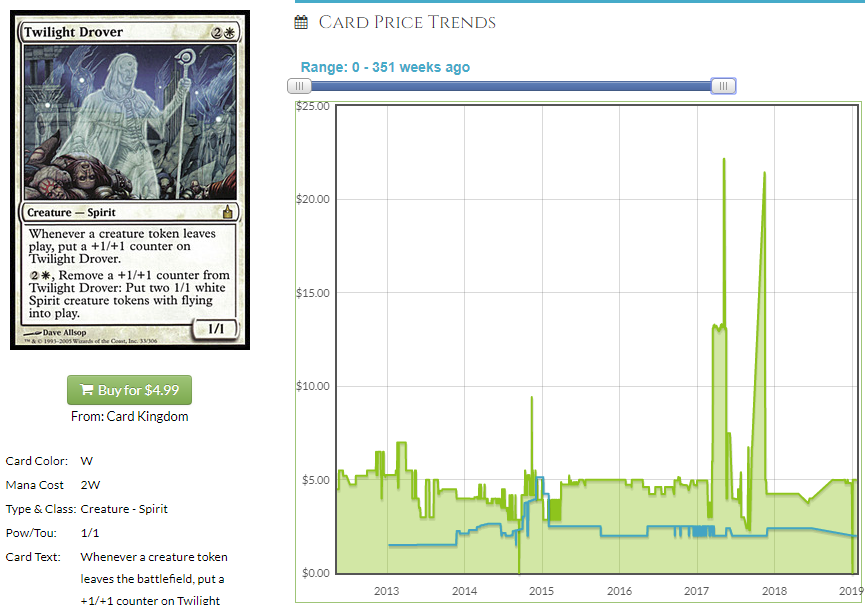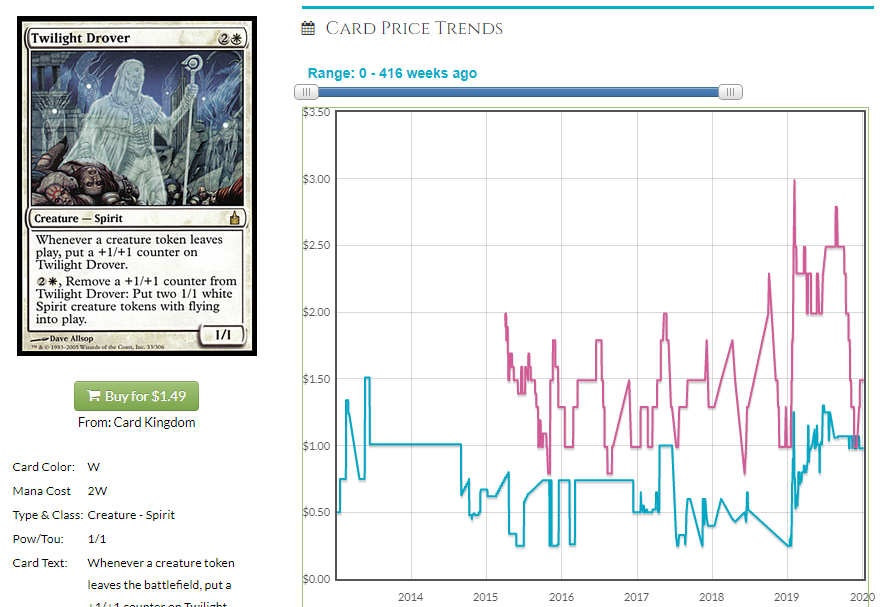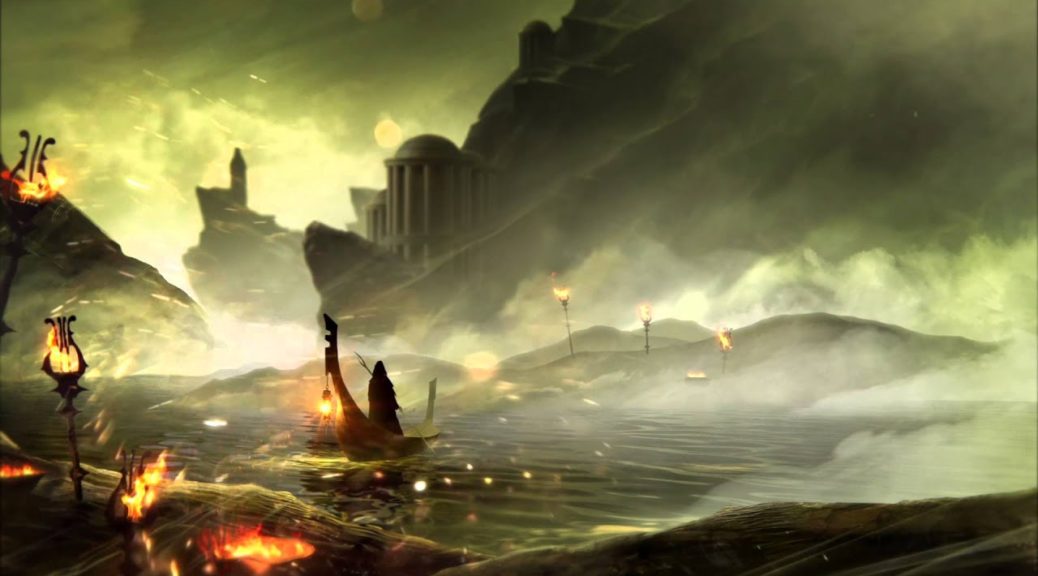It’s now been almost a month since the long-awaited ban hammer finally came down on Oko, Thief of Crowns in Pioneer. Nexus of Fate also hit the chopping block, with Wizards citing it as the deck with the second highest win rate behind Simic Food, as well as Simic Food being one of its “only unfavorable matchups among top decks” – perhaps a somewhat preemptive banning similar to that of Reflector Mage back in EMN Standard. However, with no bannings lately and a fresh switch to a six week window for future bannings in Pioneer (outside of emergency bans), it looks like the format is really starting to settle down. That being the case, let’s take a look at handful of cards that might benefit from the current scenario, shall we?
Lotus Field
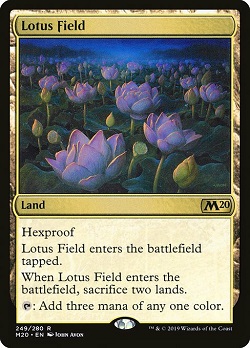
Price today: $6
Possible price: $12
Sitting tied with Izzet Phoenix at number six in the Pioneer metagame on MTG Goldfish, Lotus Storm is quickly becoming a popular deck. The storm master Caleb Scherer has been having good success piloting the deck through Magic Online leagues, and it’s been starting to put up paper results as well, placing 9th in the recent SCG Columbus Classic. Any deck playing 4 copies of Dig Through Time is bound to be doing unfair things with them – Dig is definitely in the running for the most powerful card in the format now that Oko is gone, and must certainly be on Wizard’s watchlist.
Lotus Field is the namesake of this deck for a reason – the deck functions by using a plethora of different cards to untap the land and produce a bunch of mana, winning with Expansion//Explosion or Aetherflux Reservoir, or sometimes using a combination of Omniscience, Enter the Infinite and Jace, Wielder of Mysteries to draw your entire deck. Whatever the chosen win condition, one thing is for sure: the deck always plays 4 Lotus Fields and can’t function without them.
Inventory is still relatively medium with around 100 listings on TCG Player, but it’s a steady climb from $6 up to $10, and the card will be bought playsets at a time for Pioneer decks – that means that as the deck continues to rise in popularity, we could see supply dwindle pretty quickly. Most of the listings on TCG are single copies, so it doesn’t take many players picking the deck up to drain the cheaper copies out of the market. In addition to Pioneer, Lotus Field has seen some play in the modern variant of the deck – Twiddle Storm – and is registered in almost 3k decks on EDHREC. A reprint doesn’t seem likely in the near future, so I’d advise picking your copies up sooner rather than later.
Mutavault (Morningtide)

Price today: $20
Possible price: $35
If you had to take a guess at what the top five lands played in Pioneer are, you’d probably think that they’d be the five basic land types – and you’d almost be right. But beating out Plains to the fifth slot is actually Mutavault!
Due to the lack of fetchlands in Pioneer, or mana dorks like Birds of Paradise and Noble Hierarch (although Gilded Goose is doing its best), mana fixing isn’t quite up to scratch like it is in Modern. This has meant that as the format is settling down, some of the most powerful decks are just straight mono-colour – in fact the top three decks in the metagame are currently mono-red, mono-black and mono-green. The less stringent mana requirements in these single colour decks have allowed space for more utility lands to power them up, and Mutavault is increasingly seeing play as the main land of choice. It’s colourless, so slots right into all of them, and even synergises with cards like Goblin Rabblemaster and Pack Rat.
I’m specifically looking at the Morningtide version of the card, because despite being the same art as its M14 counterpart, Morningtide was comparatively a very low print-run set, and as such that version has a much lower supply and steeper ramp. There are currently only 13 NM copies on TCG, with a steep ramp from $20 up to $35, and some people (myself included) have a penchant for the original printings of cards. Once the sub $25 copies disappear, $30-35 could easily be the new floor for this emerging staple and you’ll be rewarded for paying a few dollars over the M14 price.
Prized Amalgam (Foil)
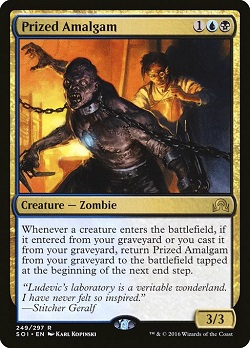
Price today: $9
Possible price: $20
I’m sure that Prized Amalgam foils were an MTGPrice pick back down the road, but it looks like we’ve finally reached that tipping point due to their additional use in Pioneer. It’s a card that’s been a solid 4-of in Modern Dredge decks since its printing in Shadows Over Innistrad, but despite Dredge spiking a few GPs a couple of years ago and ultimately getting Golgari Grave-Troll banned (again), Prized Amalgam has never really taken off in price.
The new home however is the Pioneer ‘Dredgeless Dredge’ deck, which follows similar play patterns to the Modern deck but without any actual Dredge cards. Tools like Stitcher’s Supplier and Grisly Salvage are used to mill your library over, hoping to hit freebies like Narcomoeba or cheap creatures to return to play like Scrapheap Scrounger and Haunted Dead. These then trigger your Prized Amalgams to bring them back for free at the end of the turn.
The foils of this card are in super low supply right now – there are only 8 sellers with NM foils on TCG and other retailers have a few in stock as well, but that’s it. I think we’ve reached the point where the Pioneer format has settled down enough that people are comfortable to start foiling their decks out, and we’re getting even more graveyard interaction being printed in Theros Beyond Death, so the deck could definitely see another bump in power level. A reprint is also pretty unlikely in 2020, though the unknown LGS Mystery Boosters foils do represent some risk.
David Sharman (@accidentprune on Twitter) has been playing Magic since 2013, dabbling in almost all formats but with a main focus on Modern, EDH and Pioneer. Based in the UK and a new writer for MTGPrice in 2020, he’s an active MTG finance speculator specialising in cross-border arbitrage.

